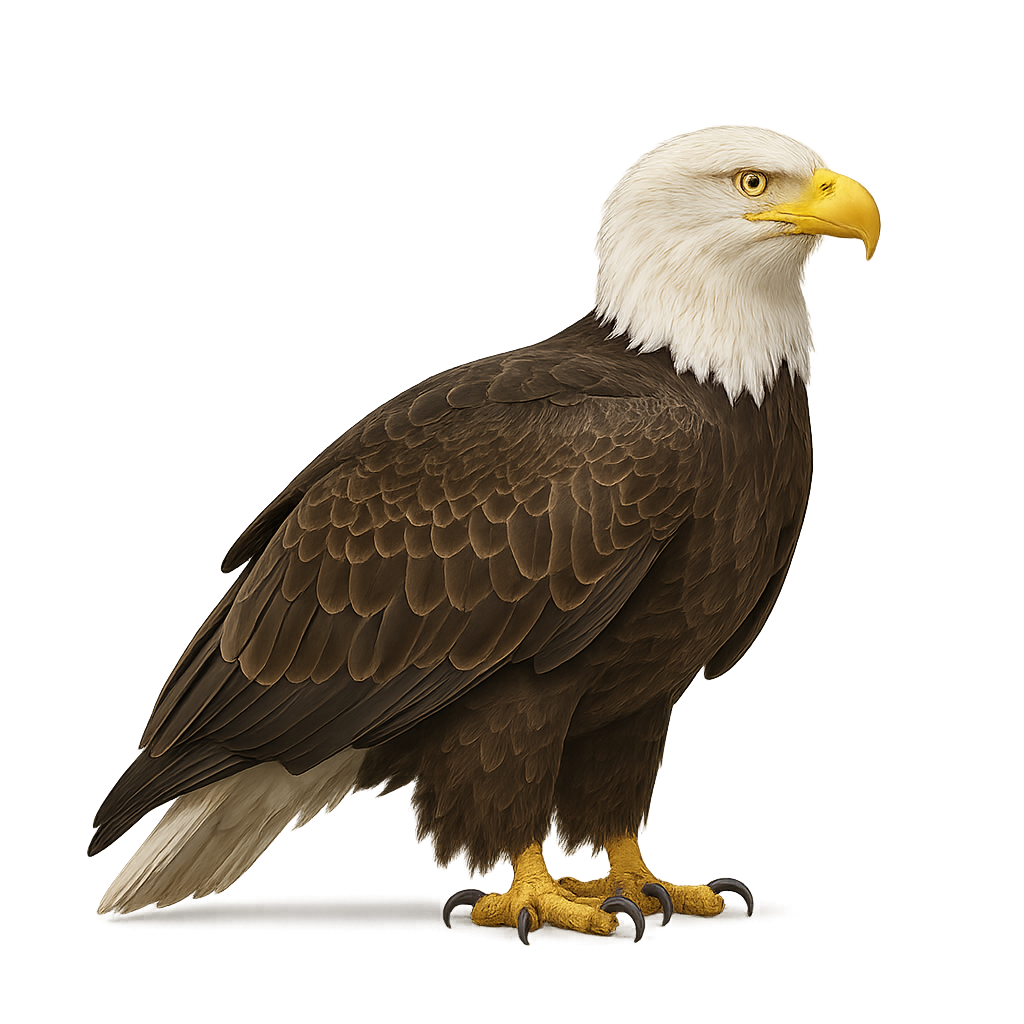Your wildlife photography guide.
Explore the bald eagle in detail, study its behavior, prepare your shots.
Where to observe and photograph the bald eagle in the wild
Learn where and when to spot the bald eagle in the wild, how to identify the species based on distinctive features, and what natural environments it inhabits. The WildlifePhotographer app offers tailored photography tips that reflect the bald eagle’s behavior, helping you capture better wildlife images. Explore the full species profile for key information including description, habitat, active periods, and approach techniques.
Bald eagle
Scientific name: Haliaeetus leucocephalus

IUCN Status: Least Concern
Family: ACCIPITRIDAE
Group: Birds
Sensitivity to human approach: Suspicious
Minimum approach distance: 100 m
Courtship display: January to March
Incubation: 34-36 jours
Hatchings: February to April
Habitat:
Coastal zones, lakes, rivers, and forests in North American regions
Activity period :
Primarily active during the day, with peak activity in the morning and late afternoon.
Identification and description:
The Bald Eagle is a large raptor primarily found in North America, near bodies of water such as lakes, rivers, and coastal areas. It measures about 70 to 90 cm in length, with a wingspan of 1.8 to 2.3 meters, and weighs between 3 and 6 kg. Its plumage is primarily dark brown with characteristic white head and tail. The Bald Eagle is an excellent hunter, primarily feeding on fish, small mammals, and birds, which it captures by diving or snatching its prey with powerful talons. Although its population once faced a significant decline and was threatened, particularly due to pollution and hunting, the Bald Eagle is now a protected species, and its population has greatly recovered.
Recommended lens:
200 mm – adjust based on distance, desired framing (portrait or habitat), and approach conditions.
Photography tips:
Use a telephoto lens to photograph this majestic bird of prey, especially during its soaring flights. Early morning or late in the day provide the best lighting conditions. Be discreet and respect the safety distance to avoid disturbing their natural activities.
The WildlifePhotographer App is coming soon!
Be the first to explore the best nature spots, track rutting seasons, log your observations, and observe more wildlife.
Already 1 449 wildlife lovers subscribed worldwide

